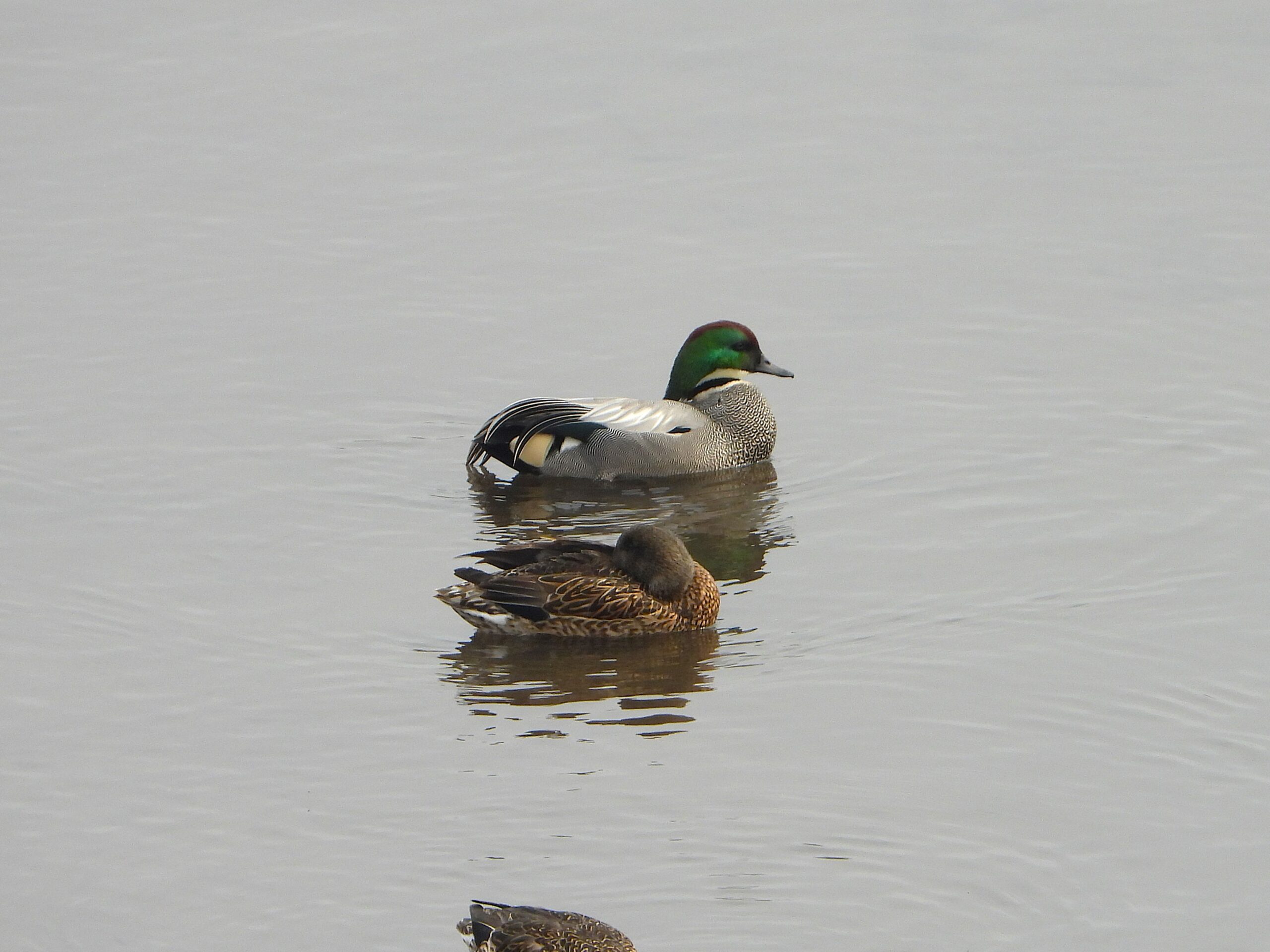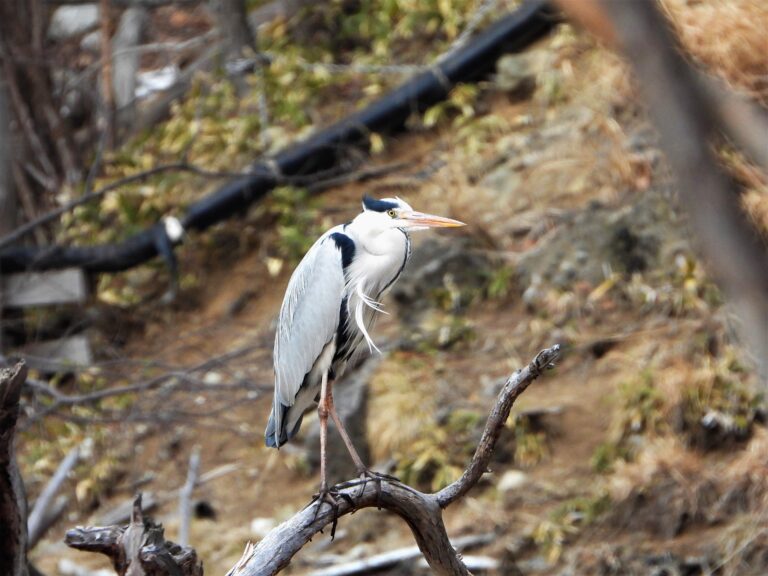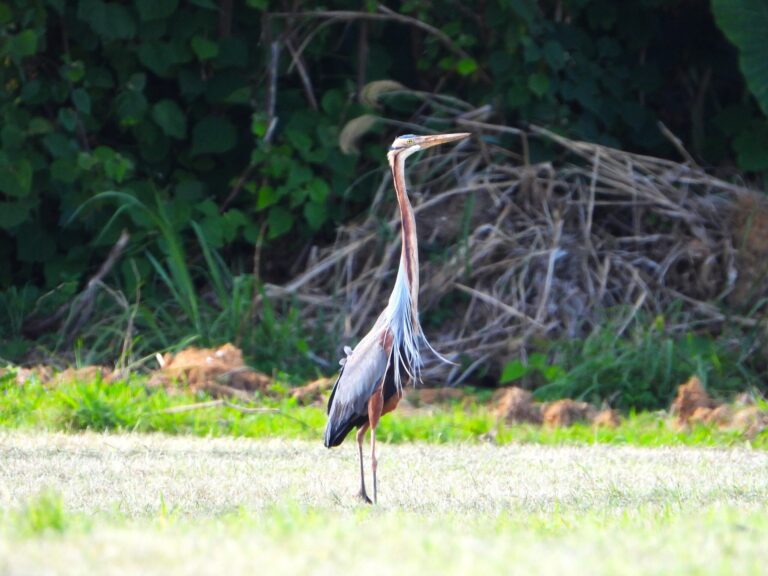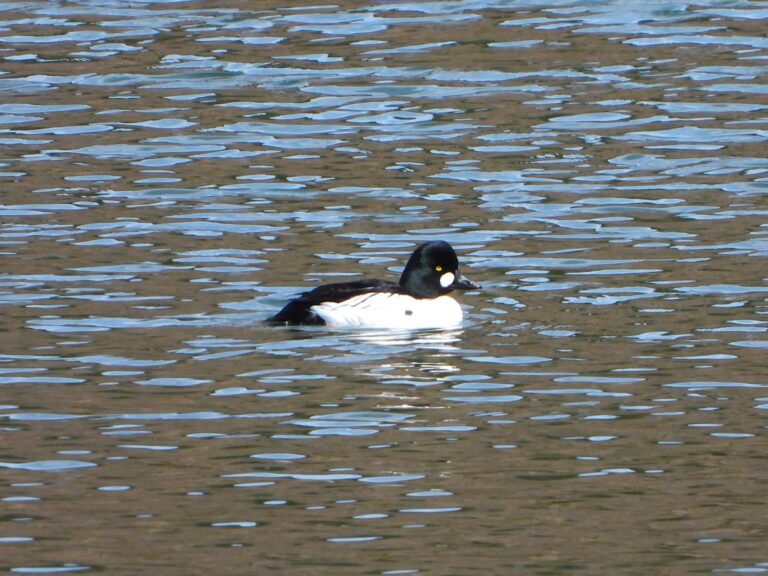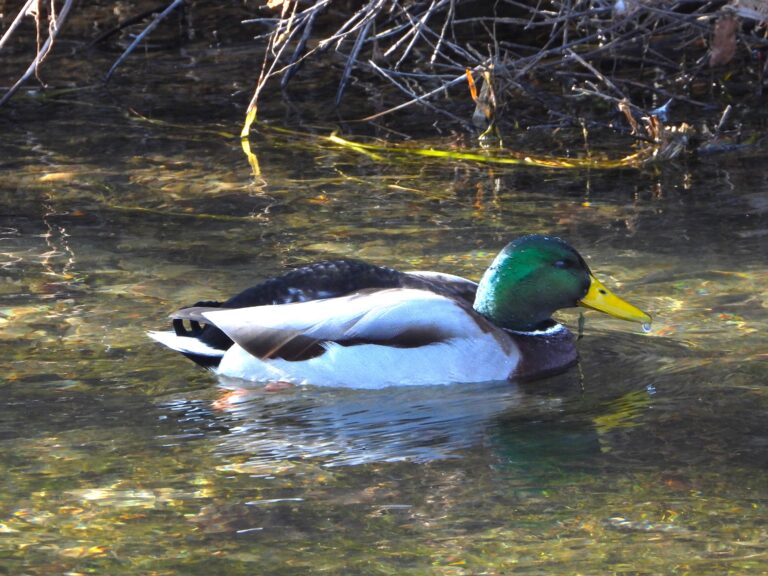Falcated Duck (Mareca falcata) – Wildlife of Japan
Introduction
The Falcated Duck (Mareca falcata), known in Japanese as Yoshigamo, is one of Japan’s most beautiful winter visitors. Famous for the male’s shimmering green head and long, sickle-shaped tertial feathers, this species is admired by birdwatchers across East Asia. It breeds mainly in eastern Siberia and Mongolia, migrating southward along the East Asian flyway to spend winter in countries such as China, Korea, and Japan. Though not as numerous as other dabbling ducks, the Falcated Duck remains a symbol of Japan’s serene winter wetlands.
Appearance
The male Falcated Duck is exceptionally striking. Its head gleams with iridescent green and bronze tones, accented by a pale gray collar. The long, curved tertial feathers drape gracefully over the tail — a feature that gives the bird its English name, “Falcated,” meaning sickle-shaped. The flanks are silver-gray, the breast is pinkish-brown, and the belly is white. The female, by contrast, is mottled brown with fine patterning for camouflage. Both sexes show a prominent white patch on the upper wing in flight and a green speculum bordered by black and white.
Habitat & Distribution
Habitat
In Japan, the Falcated Duck prefers shallow freshwater environments such as ponds, lakes, reservoirs, and rice fields. It favors areas rich in aquatic plants, where it can dabble or graze in calm, open water. During migration, it may also use temporary floodplains and irrigation channels.
Distribution
Globally, this species breeds across eastern Siberia, northeast China, and Mongolia. It winters primarily in East Asia — especially in the Yangtze River basin of China — and smaller numbers reach Korea and Japan. In Japan, it is a common winter visitor, found from Hokkaido to Kyushu between November and March. Some historical records mention possible breeding attempts in Hokkaido, but no stable breeding population has been confirmed.
Where to See in Japan
Good observation sites include:
- Lake Biwa (Shiga Prefecture) – a major wintering area for dabbling ducks.
- Kasumigaura (Ibaraki Prefecture) – large open wetlands where flocks of Falcated Ducks can be found.
- Izunuma–Uchinuma (Miyagi Prefecture) – an important Ramsar wetland hosting many wintering species.
- Urban ponds in Tokyo, Osaka, and Hiroshima – sometimes small groups appear among other ducks.
Behavior
The Falcated Duck is calm, sociable, and often found in mixed flocks with Mallards, Gadwalls, and Eurasian Wigeons. It feeds by dabbling, tipping forward in shallow water to reach submerged vegetation, and occasionally grazes on land. In flight, the white upper wing and green speculum flash brightly. The male’s call is a high, whistling “pee-oo”, while the female gives a low, coarse “quack”. Courtship begins during winter, when males display by raising their sickle-shaped feathers and bowing gracefully before the female.
Diet
This species primarily feeds on aquatic plants, pondweeds, and grass seeds. In rice paddies, they often graze on sprouting shoots. In some regions, they also consume small aquatic insects and snails, especially during migration periods when higher protein intake is needed.
Reproduction
Falcated Ducks breed across Siberia and northeastern China. The female builds a grass-lined nest near water, usually hidden among tall vegetation. She lays 6–9 eggs and incubates them for about 24 days. After hatching, the ducklings quickly leave the nest and follow the mother to nearby water, where they feed on insects and small aquatic organisms. In Japan, breeding is extremely rare; the species is seen almost exclusively during winter.
Conservation
According to the IUCN Red List and BirdLife International, the Falcated Duck is classified as Near Threatened due to habitat loss, hunting, and degradation of East Asian wetlands. While global numbers remain relatively stable, long-term declines have been observed in several key wintering regions. Conservation efforts now focus on protecting floodplain habitats and ensuring safe migration routes along the East Asian–Australasian Flyway. In Japan, the maintenance of rice-field ecosystems and protection of natural lakes are essential for sustaining its wintering populations.
Author’s Impression
The Falcated Duck has a truly distinctive appearance and a unique charm that sets it apart from other ducks. Its sickle-shaped tertial feathers and shimmering green head give it a refined, almost artistic elegance.
When observing this species, patience and distance are key. They often stay calm as long as you move slowly and quietly. Look for small groups resting on calm ponds or feeding together in shallow rice fields during winter. Early morning or late afternoon light enhances their metallic green sheen — a perfect moment for both observation and photography.

